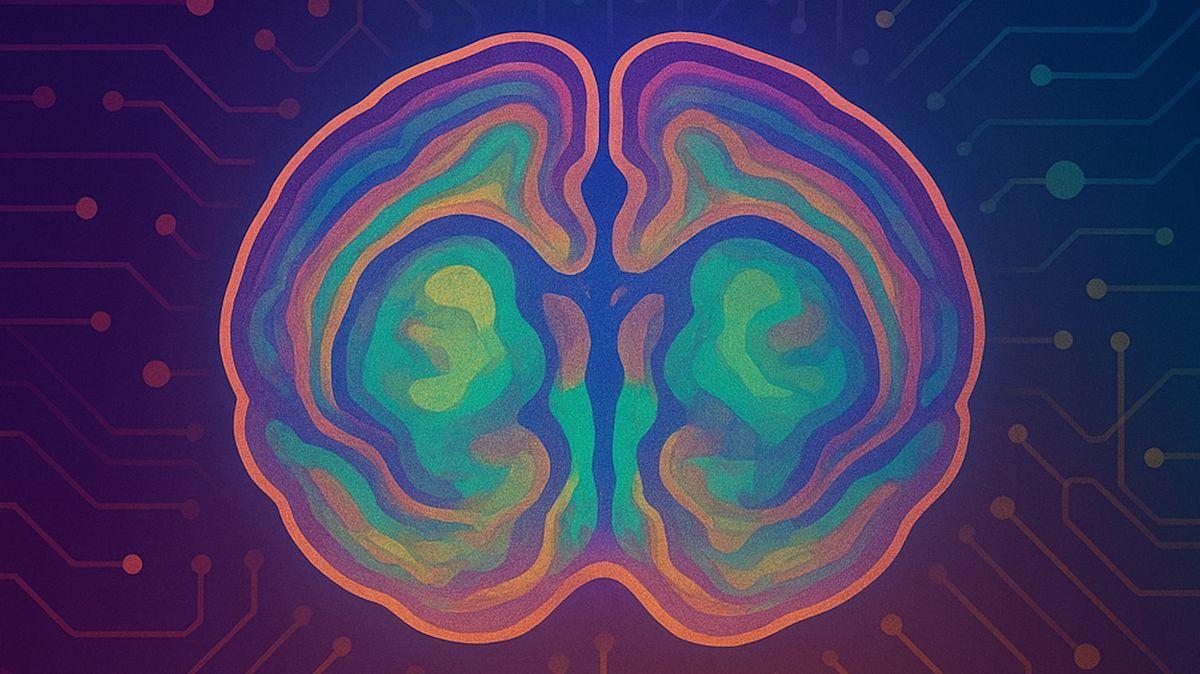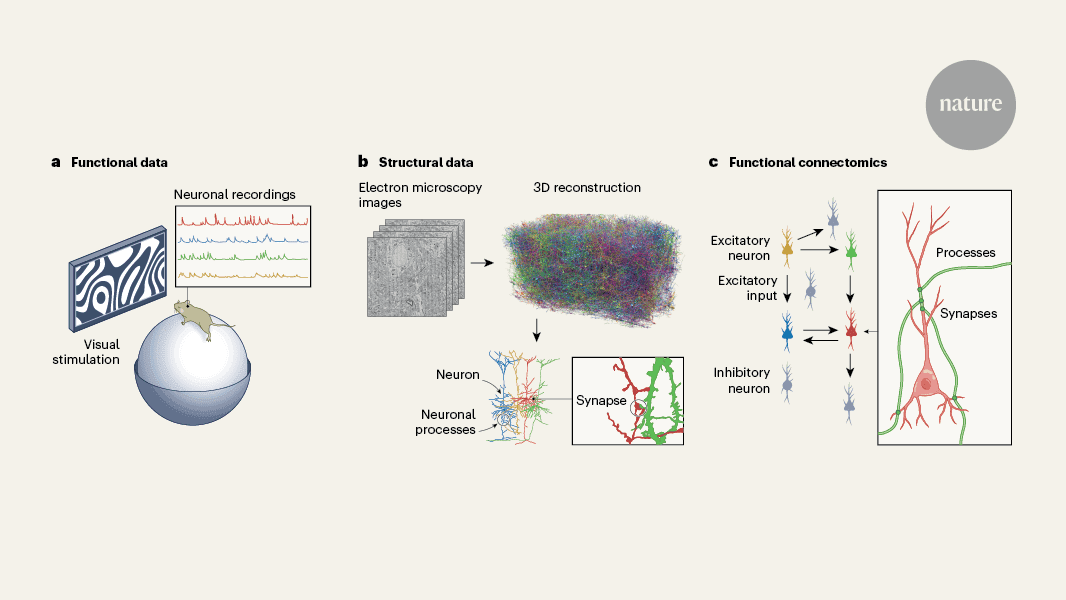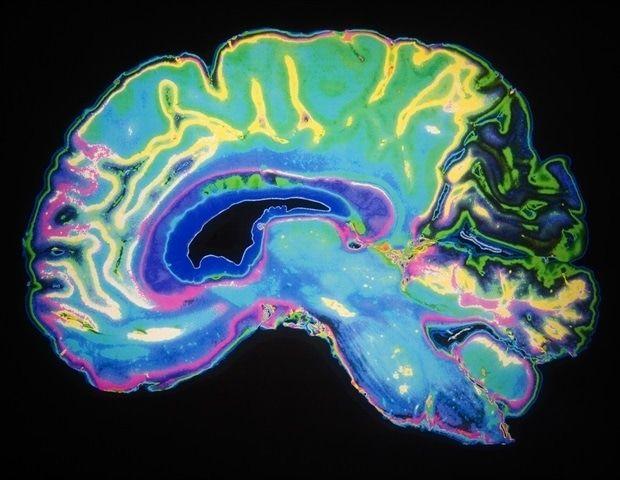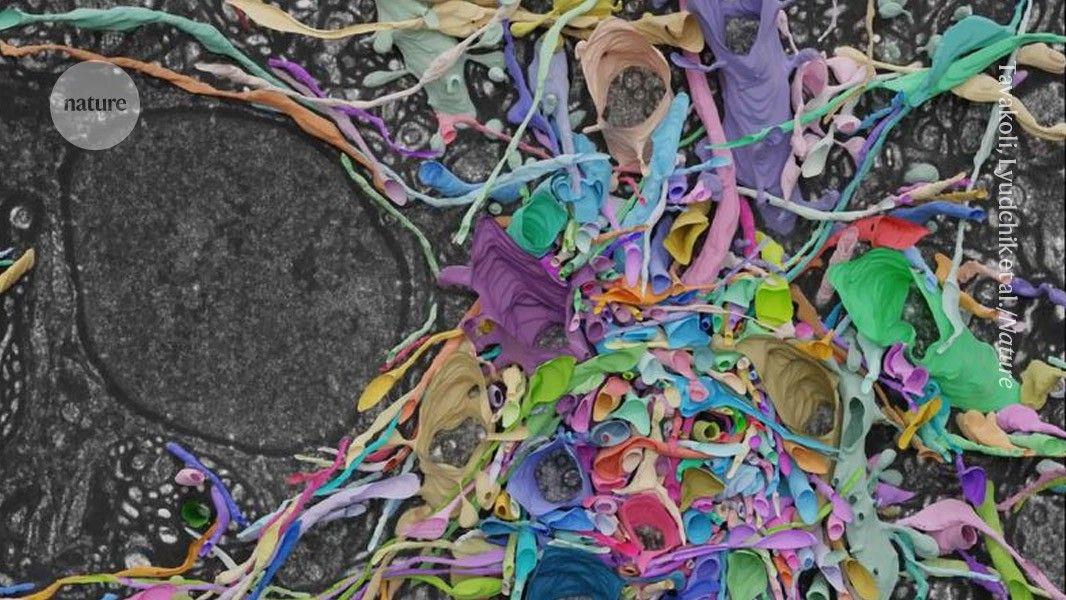AI-Powered CellTransformer Creates Most Detailed Mouse Brain Map to Date
4 Sources
4 Sources
[1]
UCSF and Allen Institute create most detailed data-driven map of the mouse brain
Allen InstituteOct 7 2025 In a powerful fusion of AI and neuroscience, researchers at the University of California, San Francisco (UCSF) and Allen Institute designed an AI model that has created one of the most detailed maps of the mouse brain to date, featuring 1,300 regions/subregions. This new map includes previously uncharted subregions of the brain, opening new avenues for neuroscience exploration. The findings were published today in Nature Communications. They offer an unprecedented level of detail and advance our understanding of the brain by allowing researchers to link specific functions, behaviors, and disease states to smaller, more precise cellular regions-providing a roadmap for new hypotheses and experiments about the roles these areas play. "It's like going from a map showing only continents and countries to one showing states and cities," said Bosiljka Tasic, Ph.D., director of molecular genetics at the Allen Institute and one of the study authors. "This new, detailed brain parcellation solely based on data, and not human expert annotation, reveals previously uncharted subregions of the mouse brain. And based on decades of neuroscience, new regions correspond to specialized brain functions to be discovered." At the heart of this breakthrough is CellTransformer, a powerful AI model that can automatically identify important subregions of the brain from massive spatial transcriptomics datasets. Spatial transcriptomics reveals where certain brain cell types are positioned in the brain but does not reveal regions of the brain based on their composition. Now, CellTransformer allows scientists to define brain regions and subdivisions based on calculations of shared cellular neighborhoods, much like sketching a city's borders based on the types of buildings within it. "Our model is built on the same powerful technology as AI tools like ChatGPT. Both are built on a 'transformer' framework which excels at understanding context," said Reza Abbasi-Asl, Ph.D., associate professor of neurology and bioengineering at UCSF and senior author of the study. "While transformers are often applied to analyze the relationship between words in a sentence, we use CellTransformer to analyze the relationship between cells that are nearby in space. It learns to predict a cell's molecular features based on its local neighborhood, allowing it to build up a detailed map of the overall tissue organization." This model successfully replicates known regions of the brain, such as the hippocampus; but more importantly, it can also discover previously uncatalogued, finer-grained subregions in poorly understood brain regions, such as the midbrain reticular nucleus, which plays a complex role in movement initiation and release. What makes this brain map distinct from others This new brain map depicts brain regions, versus cell types; and unlike previous brain maps, CellTransformer's is entirely data-driven, meaning its boundaries are defined by cellular and molecular data rather than human interpretation. With 1,300 regions and subregions, it also represents one of the most granular and complex data-driven brain maps of any animal to date. Role of the Allen Institute's Common Coordinates Framework (CCF) The Allen Institute's Common Coordinate Framework (CCF) served as the essential gold standard for validating CellTransformer's accuracy. "By comparing the brain regions automatically identified by CellTransformer to the CCF, we were able to show that our data-driven method was identifying areas aligned with known expert-defined anatomical structures," said Alex Lee, a PhD candidate at UCSF and first author of the study. "Seeing that our model produces results so similar to CCF, which is such a well-characterized and high-quality resource for the field, was reassuring. The high level of agreement with the CCF provided a critical benchmark, giving confidence that the new subregions discovered by CellTransformer may also be biologically meaningful. We are hoping to explore and validate the results with further computational and experimental studies." The potential of this research to unlock critical insights reaches beyond neuroscience. CellTransformer's powerful AI capabilities are tissue agnostic: They can be used on other organ systems and tissues, including cancerous tissue, where large-scale spatial transcriptomics data is available to better understand the biology of health and disease and fuel the discovery of new treatments and therapies. Allen Institute
[2]
Scientists used AI to map uncharted areas of the mouse brain
Using a ChatGPT-like AI model, scientists have created a new map of the mouse brain that captures previously uncharted areas of the organ in unprecedented detail. The map, published Tuesday (Oct. 7) in the journal Nature Communications, captures 1,300 regions of the brain and is the first to detail brain regions without requiring manual input from humans. The study authors, from the University of California, San Francisco (UCSF) and the Allen Institute for Cell Science, hope that the project will enable researchers to sketch such tissue maps across the entire body. Advances in genomics have produced a vast amount of information about the cells across the nervous system, revealing the cells' identities and functions. One technique that has produced this data deluge is spatial transcriptomics, which reveals how cells use genetic information to produce proteins, thereby connecting the information in the genome with the body's functions. The approach also shows the positions of individual cells in the space within tissues. This information has informed previous cell atlases of the mouse brain. However, arranging the information from such experiments into a comprehensive brain map poses a significant challenge. For previous maps of the brain, researchers had to manually annotate each piece of the map to demarcate specific areas of the brain and where the recorded cells fit within them. The new study sidestepped this laborious task. The spatial transcriptomics data used for the new map included information on the activity of 500 to 1,000 genes in each analyzed cell. At this level of complexity, the data analysis is challenging, said study co-author Reza Abbasi-Asl, a professor of neurology and bioengineering at UCSF. Moreover, marking brain regions using the raw spatial transcriptomics data -- a process called parcellation -- produces fuzzy maps, Abbasi-Asl said. That's where the team's AI-based approach paid off. Large language models (LLMs), such as ChatGPT, have captivated and excited millions of users with their ability to generate text output from prompts. At their core, these systems work by mathematically predicting the relationships between individual words. Abbasi-Asl, alongside his doctoral student Alex Lee, created the AI system, named CellTransformer, which instead analyzes how individual cells sit next to each other in the brain based on spatial transcriptomics information. The AI system transforms the spatial data, enhancing it with new information. "We build a missing piece between spatial transcriptomics data and parcellation of the brain that connects the two," Abbasi-Asl told Live Science. The new dataset generated by CellTransformer produces much sharper maps that are more similar to known brain regions than manual annotation could, according to Abbasi-Asl, and also identifies previously uncataloged, finer-grained regions. The new map covers approximately 1,300 sections of the mouse brain, resulting in a total dataset of over 9 million cells. The team coordinated their data with the Allen Institute's Common Coordinate Framework (CCF), a high-resolution map of the mouse brain previously constructed using manual annotation. There was strong coherence between the AI-generated output and the gold-standard CCF, which gave the team confidence that their findings were highly accurate. CellTransformer successfully mapped known brain regions, such as the hippocampus, a key memory center. The tool also charted brain areas that other mapping efforts had struggled to obtain data on, such as the midbrain reticular nucleus, (CK)which is located in the topmost part of the brainstem and processes sensory and motor information, while also regulating sleep. The data processing behind CellTransformer doesn't work only for brain tissue, the authors emphasized. "A similar pipeline could be used with data sets that are now emerging from the heart, from other body parts, and also from tissues that are collected in disease models as opposed to healthy models," Abbasi-Asl said. The team also wants to test CellTransformer on human brain data -- but while the mouse brain contains tens of millions of cells, our brains have around 170 billion cells, including 86 billion neurons. The human brain's sheer size, as well as its more complex structure, will make it harder to provide a sufficient amount of spatial data to feed the AI. If such data can be brought to CellTransformer, Abbasi-Asl reckons the tools could process it, though. "We do believe that it could work on human data too," he said. "That's another really important next step."
[3]
Scientists create ChatGPT-like AI model for neuroscience to build one of the most detailed mouse brain maps to date
In a powerful fusion of AI and neuroscience, researchers at the University of California, San Francisco (UCSF) and Allen Institute designed an AI model that has created one of the most detailed maps of the mouse brain to date, featuring 1,300 regions/subregions. This new map includes previously uncharted subregions of the brain, opening new avenues for neuroscience exploration. The findings were published in Nature Communications. They offer an unprecedented level of detail and advance our understanding of the brain by allowing researchers to link specific functions, behaviors, and disease states to smaller, more precise cellular regions -- providing a roadmap for new hypotheses and experiments about the roles these areas play. "It's like going from a map showing only continents and countries to one showing states and cities," said Bosiljka Tasic, Ph.D., director of molecular genetics at the Allen Institute and one of the study authors. "This new, detailed brain parcellation solely based on data, and not human expert annotation, reveals previously uncharted subregions of the mouse brain. And based on decades of neuroscience, new regions correspond to specialized brain functions to be discovered." At the heart of this breakthrough is "CellTransformer," a powerful AI model that can automatically identify important subregions of the brain from massive spatial transcriptomics datasets. Spatial transcriptomics reveals "where" certain brain cell types are positioned in the brain but does not reveal regions of the brain based on their composition. Now, CellTransformer allows scientists to define brain regions and subdivisions based on calculations of shared cellular neighborhoods, much like sketching a city's borders based on the types of buildings within it. "Our model is built on the same powerful technology as AI tools like ChatGPT. Both are built on a 'transformer' framework which excels at understanding context," said Reza Abbasi-Asl, Ph.D., associate professor of neurology and bioengineering at UCSF and senior author of the study. "While transformers are often applied to analyze the relationship between words in a sentence, we use CellTransformer to analyze the relationship between cells that are nearby in space. It learns to predict a cell's molecular features based on its local neighborhood, allowing it to build up a detailed map of the overall tissue organization." This model successfully replicates known regions of the brain, such as the hippocampus; but more importantly, it can also discover previously uncataloged, finer-grained subregions in poorly understood brain regions, such as the midbrain reticular nucleus, which plays a complex role in movement initiation and release. What makes this brain map distinct from others This new brain map depicts brain regions, versus cell types; and unlike previous brain maps, CellTransformer's is entirely data-driven, meaning its boundaries are defined by cellular and molecular data rather than human interpretation. With 1,300 regions and subregions, it also represents one of the most granular and complex data-driven brain maps of any animal to date. The Allen Institute's Common Coordinate Framework (CCF) served as the essential gold standard for validating CellTransformer's accuracy. "By comparing the brain regions automatically identified by CellTransformer to the CCF, we were able to show that our data-driven method was identifying areas aligned with known expert-defined anatomical structures," said Alex Lee, a Ph.D. candidate at UCSF and first author of the study. "Seeing that our model produces results so similar to CCF, which is such a well-characterized and high-quality resource for the field, was reassuring. The high level of agreement with the CCF provided a critical benchmark, giving confidence that the new subregions discovered by CellTransformer may also be biologically meaningful. We are hoping to explore and validate the results with further computational and experimental studies." The potential of this research to unlock critical insights reaches beyond neuroscience. CellTransformer's powerful AI capabilities are tissue agnostic: They can be used on other organ systems and tissues, including cancerous tissue, where large-scale spatial transcriptomics data is available to better understand the biology of health and disease and fuel the discovery of new treatments and therapies.
[4]
Scientists enlist AI to map regions of the brain in unprecedented detail -- and that's just the start
Scientists say an artificial intelligence program that they compare to ChatGPT has helped them create one of the most detailed maps of the mouse brain to date, with 1,300 regions and subregions marked on the map. Some of those subregions have never been charted before -- and the researchers say there's more to come. "I think there are already indications that we can go beyond what we see now," said Bosiljka Tasic, director of molecular genetics at Seattle's Allen Institute for Brain Science. The mapping effort, led by researchers at the University of California at San Francisco and the Allen Institute, is detailed in a study published today in the journal Nature Communications. "Our model is built on the same powerful technology as AI tools like ChatGPT," senior author Reza Abbasi-Asl, a neuroscientist at UCSF, said in a news release. "Both are built on a 'transformer' network which excels at understanding context." That context could be important for treating neurological ailments, Tasic told GeekWire. "Location is everything in the brain," she said. "Defining the geography of the brain, and then defining all these regions and their functions, not only leads to better understanding, but also better ability to treat." More detailed maps of the brain's cellular structure could lead to more targeted drug treatments that cause fewer side effects. "We always want to go toward better, more precise brain therapies, but in order to do that, you need to know where you need to interfere, what went wrong in what place, and what you need to fix," Tasic said. "And if you don't have the map, how are you going to know where it is?" Mapping the brain's neighborhoods Brain-mapping efforts have typically relied on human interpretation of the brain's anatomy, but scientists are getting better at identifying the location and function of millions of individual brain cells. They're getting so much better at collecting huge masses of data that they need AI to help with the interpretation. "We are at a point where we have amazing experimental technology, so next-generation sequencing is completely revolutionized," Tasic said. "Our way to define cell types -- the fact that you can measure thousands of genes per cell, and define cells that are similar as a cell type -- has transformed biology." The availability of software that can deal with such high-dimensional data is making this "an amazing time for a neuroscientist," she said. The key to the newly published study is an AI model called CellTransformer. The model sifts through huge sets of data about the locations and functions of brain cells, known as spatial transcriptomics data sets, to determine which cells belong in the same "neighborhood" of the brain. CellTransformer analyzed spatial transcriptomics data about 9 million cells in more than 200 tissue sections that were taken from the brains of four individual mice. At first, researchers programmed the model to define the boundaries of 25 regions in the brain. Eventually, they raised the resolution to define 670 regions and subregions. At each level of resolution, CellTransformer's brain maps matched what had been defined previously by human experts. Then the dial was turned up to produce 1,300 regions and subregions. At that level, CellTransformer successfully replicated maps of cataloged regions of the brain. It also identified previously uncataloged, finer-grained subregions in areas of the brain that are currently poorly understood. Tasic said the process was like going from a map that showed only continents, or only countries, to a map that showed states, cities and even the neighborhoods within cities. "What we're saying is, let's take any cell and ask, 'Who are the neighbors?' And then, based on the commonality of the neighbors, call it a region," she said. "Basically, that's what CellTransformer did." Some of the previously uncharted subregions are in the midbrain reticular nucleus, which plays a complex role in processing sensory and motor information. Other newly identified subregions are in the superior colliculus, a part of the midbrain that processes sensory information and initiates eye, head and body movements to focus on objects of interest. Focusing on new neuro-frontiers Tasic said it's possible to turn up the dial on CellTransformer's algorithms to produce maps of the brain that are even more detailed. "Now, the question is, which ones are meaningful, in what way, and what do they represent biologically?" she said. Another question has to do with what to call the newly characterized subregions. "Just imagine that you came to a new land, and you are seeing there is this and there is that. But now I need to name it. Now I need to see what else is around," Tasic said. "We want to give meaningful, systematic names and also reference how it relates to older maps." Perhaps the biggest questions relate to how the newly published map, which is based on cell types, will line up with maps that trace connections between cells, or patterns of brain-cell activity. "I'm just hoping for more systematic data collection, more systematic data analysis, and more multimodal models -- models that will not only measure gene expression and cell type, but connectivity and productivity, and define brain regions based on all of those," Tasic said. Tasic said the AI-based techniques that were developed for mapping mouse brains are "absolutely extendable to the human brain," but she doesn't expect that to happen overnight. "The limit is actually data collection," she said. "The human brain is huge, so that's one problem. ... I don't want to give any estimates, but it will take maybe a decade more to just collect [data about] the full human brain at the level of detail that we did for the mouse." UCSF researcher Alex Lee is the principal author of the Nature Communications study, titled "Data-Driven Fine-Grained Region Discovery in the Mouse Brain With Transformers." Other authors include Alma Dubuc, Michael Kunst, Shenqin Lao, Nicholas Lusk, Lydia Ng, Hongkui Zeng, Bosiljka Tasic and Reza Abbasi-Asl.
Share
Share
Copy Link
Researchers from UCSF and Allen Institute have developed an AI model called CellTransformer, which has created one of the most detailed maps of the mouse brain, featuring 1,300 regions and subregions. This breakthrough combines AI and neuroscience to advance our understanding of brain structure and function.
AI and Neuroscience Fusion Creates Unprecedented Brain Map
Researchers at the University of California, San Francisco (UCSF) and the Allen Institute have achieved a significant breakthrough in neuroscience by creating one of the most detailed maps of the mouse brain to date. This groundbreaking work, published in Nature Communications, combines artificial intelligence with advanced neuroscience techniques to chart 1,300 regions and subregions of the mouse brain
1
2
.
Source: Medical Xpress
CellTransformer: The AI Behind the Breakthrough
At the heart of this achievement is CellTransformer, a powerful AI model developed by the research team. CellTransformer utilizes the same 'transformer' framework that powers AI tools like ChatGPT, but instead of analyzing relationships between words, it examines the spatial relationships between brain cells
3
.
Source: Live Science
Dr. Reza Abbasi-Asl, associate professor at UCSF and senior author of the study, explained, "Our model learns to predict a cell's molecular features based on its local neighborhood, allowing it to build up a detailed map of the overall tissue organization"
1
.Unprecedented Detail and New Discoveries
The new brain map is unique in several ways:
- It depicts brain regions rather than just cell types.
- It is entirely data-driven, with boundaries defined by cellular and molecular data instead of human interpretation.
- It represents one of the most granular and complex data-driven brain maps of any animal to date
1
.
CellTransformer has not only successfully replicated known brain regions but has also discovered previously uncatalogued, finer-grained subregions in poorly understood areas. For instance, it has revealed new details in the midbrain reticular nucleus, which plays a complex role in movement initiation and release
2
4
.Related Stories
Validation and Future Implications
The Allen Institute's Common Coordinate Framework (CCF) served as a gold standard for validating CellTransformer's accuracy. Alex Lee, a Ph.D. candidate at UCSF and first author of the study, noted, "The high level of agreement with the CCF provided a critical benchmark, giving confidence that the new subregions discovered by CellTransformer may also be biologically meaningful"
3
.This research has significant implications beyond neuroscience. The AI capabilities of CellTransformer are tissue-agnostic, meaning they can be applied to other organ systems and tissues, including cancerous tissue. This versatility could accelerate our understanding of various biological processes and potentially lead to new treatments and therapies
1
4
.The Road Ahead
While this map represents a significant advancement, researchers believe there's potential for even more detailed mapping. Dr. Bosiljka Tasic from the Allen Institute commented, "I think there are already indications that we can go beyond what we see now"
4
.The next challenge lies in applying this technology to the human brain, which contains approximately 170 billion cells compared to the tens of millions in a mouse brain. Despite the complexity, researchers are optimistic about the potential of CellTransformer to work with human brain data in the future
2
.References
Summarized by
Navi
[2]
[3]
Related Stories
Scientists Create Most Detailed Mammalian Brain Map to Date
10 Apr 2025•Science and Research

AI-Powered 3D Brain Mapping Tool Revolutionizes Neurodegenerative Disease Research
20 Mar 2025•Science and Research

AI-Powered NextBrain Atlas Creates Most Detailed 3D Map of Human Brain for Medical Imaging
05 Nov 2025•Science and Research

Recent Highlights
1
AI Chatbots Sway Voters More Effectively Than Traditional Political Ads, New Studies Reveal
Science and Research

2
OpenAI declares code red as Google's Gemini 3 gains 200 million users in three months
Technology

3
Trump approves Nvidia H200 chip exports to China with 25% revenue cut, defying Senate concerns
Policy and Regulation





